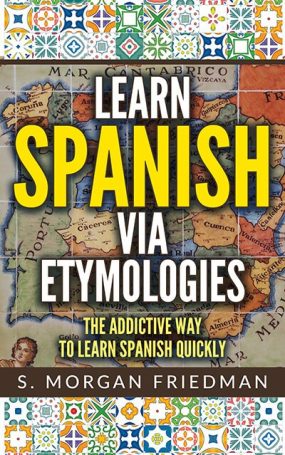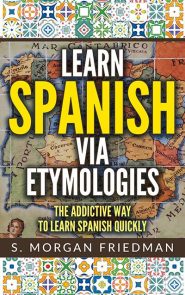Semana and September
- Posted by Morgan
- on Mar 23, 2024
- in True Spanish Etymology Stories
Semana (Spanish for “week”) comes from the Latin septimana for the same. Septimana itself comes from the Latin root septem meaning… seven. There are, after all, seven days in the week–by definition!
From the same root, we get the English September. But something isn’t right. Isn’t September the ninth month, not the seventh month? Huh?
The fascinating explanation is that the ancient calendar had ten months, the first of which is… March. So, the numbering is all two behind. This explains not only why September is two off, but so is October (from the root oct- meaning “eight”, not “ten”) as well as November (nov– for “nine”, not “eleven”) and December (dec– for “ten”, not “twelve.”)
- See more of this pattern: True Spanish Etymology Stories
Estrella Fugaz and Fugitive
- Posted by Morgan
- on Mar 23, 2024
- in Initial F to H, Patterns
A “shooting star” in Spanish is an estrella fugaz. Since estrella means “star”, then fugaz is the parallel to “shooting.”
Fugaz comes from the Latin fugere which means, “to run away; flee” — from which we get the English fugitive.
The mapping is obvious with the f-g retained in both versions.
Thus, in Spanish, a shooting star is literally, a fleeing star. But fleeing from what?
- See more of this pattern: Initial F to H, Patterns
Perejil and Parsley
Perejil and its English version parsley sound very different. But they are, actually, etymologically the same word.
They sound different because often the -s- and -sh- sounds in Spanish turned into the letter -j- with the Arabic throat-clearing sound as a pronunciation. Thus, the p-r-j-l of perejil maps exactly to the p-r-s-l of parsley.
Correr and Current
- Posted by Morgan
- on Mar 23, 2024
- in True Spanish Etymology Stories
The Spanish correr, “to run,” comes from the Latin for the same: currere.
In a “It’s not obvious until you realize it, then it’s completely obvious moment!”, this is related to the English: current.
Although current obviously does not share the same literal meaning of running, conceptually it is very similar: what is happening right now is what is running or flowing by.
So time doesn’t fly; it flows past, right now — literally.
Not to mention, think of the way they always talk about electricity: the running current.
- See more of this pattern: True Spanish Etymology Stories
Huevo and Ovulate
- Posted by Morgan
- on Mar 21, 2024
- in True Spanish Etymology Stories
Huevo (Spanish for “egg”) comes from the Latin ovum for the same. From that Latin root, we get the English… ovaries. The ue-v of huevo clearly maps to the o-v of ovary! The eggs are both literal and metaphorical!
From the same root we also get ovulate and even… oval An egg is oval, isn’t it?
- See more of this pattern: True Spanish Etymology Stories
Involucrar and Envelope
- Posted by Morgan
- on Mar 21, 2024
- in True Spanish Etymology Stories
The Spanish involucrar (“to get involved with”) comes from the Celtic voloper (“to wrap up.”) Isn’t getting “involved” with something just getting yourself wrapped up in it?
From that same Celtic root, we also get the English… envelope. An
We can see the i-n-v-l of involucrar maps to the e-n-v-l of envelope.
- See more of this pattern: True Spanish Etymology Stories
what is the etymological way to learn spanish?
Nerds love to pattern-match, to find commonalities among everything. Our approach to learning languages revolves (the same -volve- that is in “volver”, to “return”) around connecting the Spanish words to the related English words via their common etymologies – to find the linguistic patterns, because these patterns become easy triggers to remember what words mean. Want to know more? Email us and ask:
morgan@westegg.com

